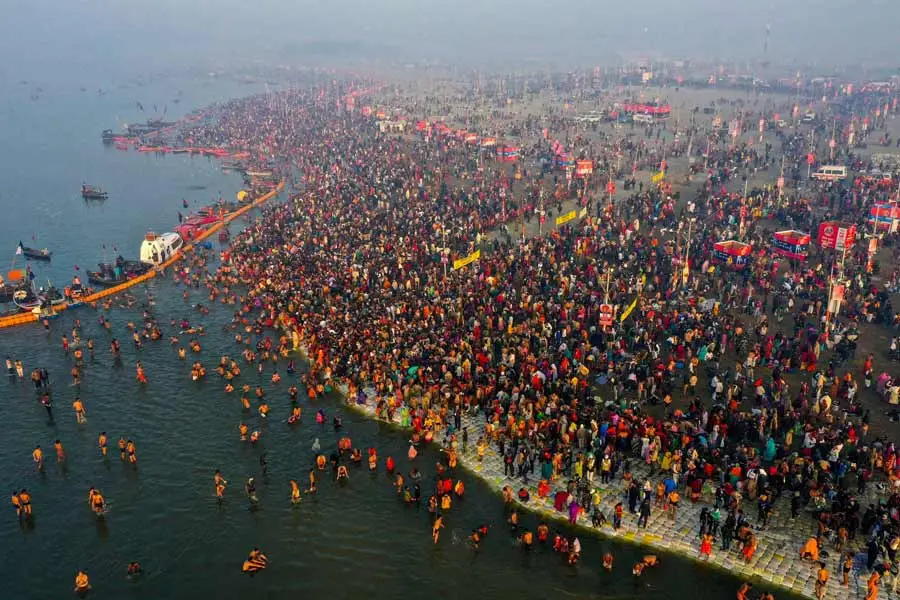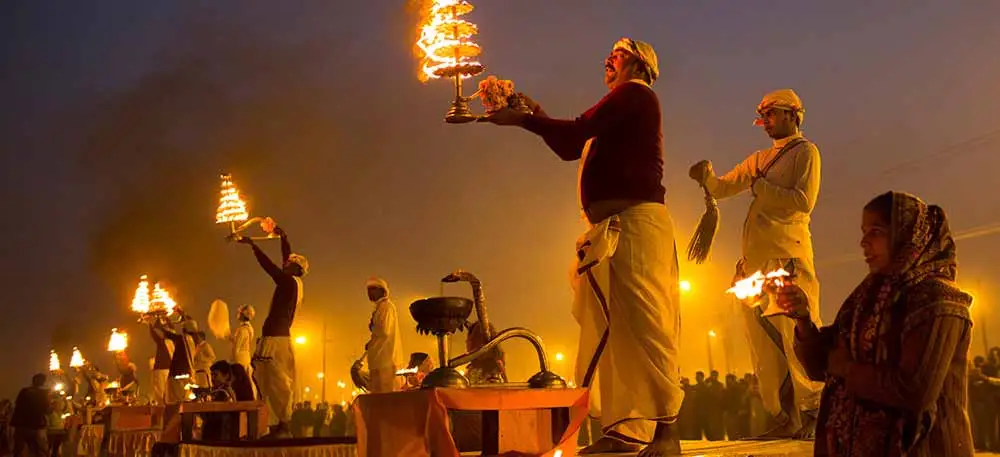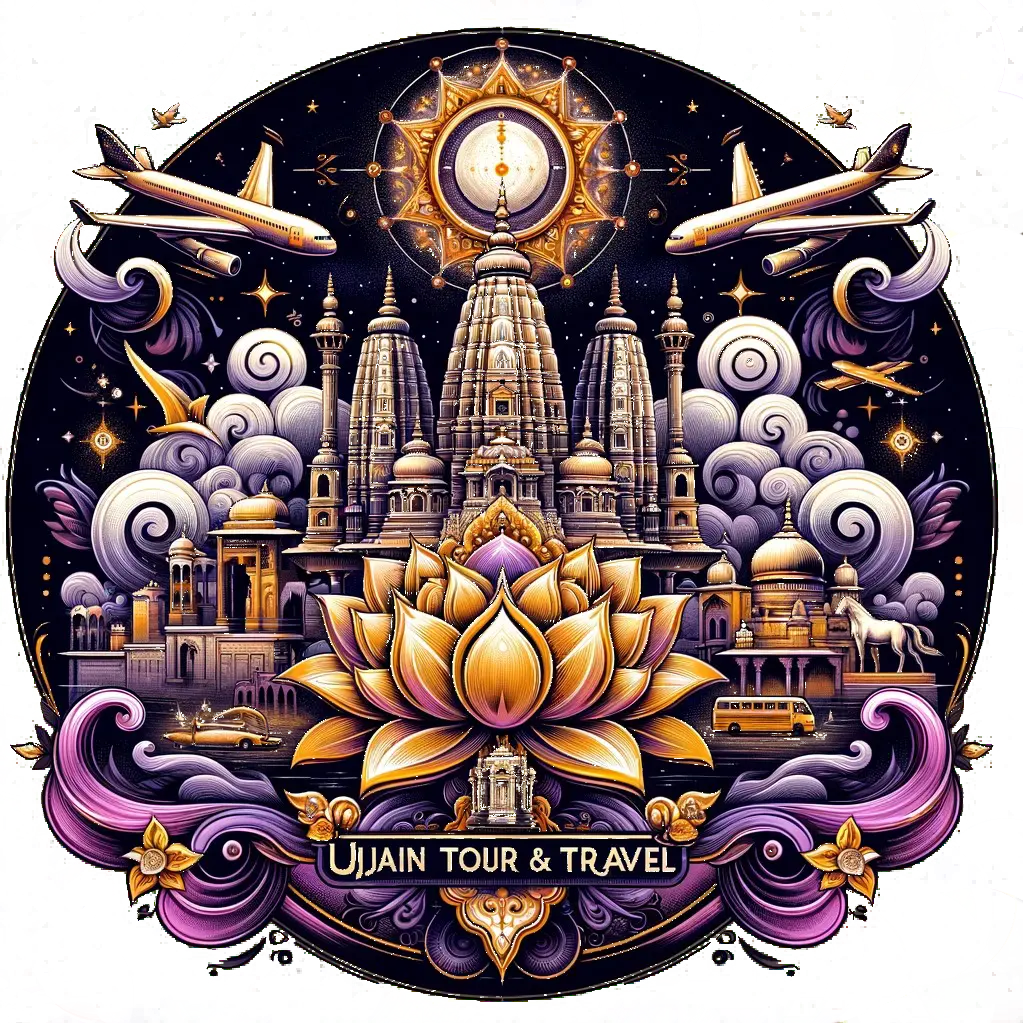
The Divine Gathering: Unveiling the Kumb Mela in Ujjain
Every twelve years, Ujjain, Madhya Pradesh, transforms as millions of pilgrims converge for the Kumbh Mela—the world’s largest religious gathering.

A Journey Through Time: The Kumbh Mela's Legacy
The origins of the Kumbh Mela are rooted in ancient mythology. A celestial battle between gods (devas) and demons (asuras) over a pot (kumbh) of the elixir of immortality (amrita) resulted in drops of the nectar spilling onto four locations—Haridwar, Nasik, Ujjain, and Prayagraj. These four cities now host the Kumbh Mela in rotation every twelve years. Ujjain, one of the seven most sacred Hindu pilgrimage sites (Sapta Puri), has been part of this spiritual tradition since the 7th century AD.
A Celebration of Faith: The Significance of Kumbh Mela
The Kumbh Mela is more than a religious event—it’s a celebration of faith, community, and culture. Here’s why it holds immense significance:
- Spiritual Purification: Hindus believe that bathing in the holy rivers during Kumbh Mela cleanses one’s sins and brings spiritual liberation (moksha). In Ujjain, the Shipra River is the center of this ritual.
- Gathering of Sadhus and Saints: The festival draws ascetics, religious leaders, and scholars from across India, creating a space for spiritual exchange.
- Cultural Festival: The Kumbh Mela showcases India's diverse culture with processions, traditional music, and dance performances.
- Economic Boost: The influx of pilgrims significantly benefits Ujjain’s economy through hospitality, food services, and local goods.
A Rich Tapestry of Rituals: The Heart of the Kumbh Mela
Kumbh Mela in Ujjain is defined by various rituals steeped in meaning:
- Shahi Snan (Royal Bath): A grand procession of sadhus representing different monasteries (akharas) culminates in a holy dip in the Shipra River. The celestial alignments that determine the dates of the Shahi Snan make it an especially sacred event.
- Sangam Snan: Pilgrims bathe at the confluence of the Shipra and other small rivers, believed to enhance spiritual power.
- Sandhya Aarti: At dusk, an awe-inspiring aarti ceremony lights up the ghats (riverbanks) as devotees offer lamps while chanting hymns.
- Darshan and Puja: Devotees visit temples like Mahakaleshwar Jyotirlinga, one of India’s twelve Jyotirlingas, to perform pujas and seek blessings.
A City Transformed: The Pandal Phenomenon
During the Kumbh Mela, Ujjain transforms with temporary structures called pandals, constructed by religious organizations and akharas. These pandals are richly decorated with vibrant colors, religious motifs, and mandalas, often illustrating mythological stories or spreading social messages.
Beyond Rituals: The Kumbh Mela Experience
Kumbh Mela offers more than just religious rituals, making it a holistic experience:
- Langar Seva: Community kitchens (langars) provide free meals to pilgrims, embodying the festival's spirit of generosity.
- Spiritual Discourses and Lectures: Satsangs and lectures by esteemed saints offer insights into spirituality and philosophy.
- Bhandaras (Community Feasts): Lavish meals provided by wealthy patrons or organizations, free for all, encourage unity and inclusivity.
- Book Fairs and Exhibitions: These offer a marketplace of religious literature and traditional handicrafts, enriching the cultural exchange.
- Yoga and Meditation: Sessions provide a space for deeper spiritual reflection and rejuvenation.
Addressing Challenges
While the Kumbh Mela is spiritually profound, managing the massive crowds presents challenges. Organizers must carefully plan for infrastructure, sanitation, and environmental sustainability, as the temporary pandals can raise ecological concerns.
The Future of Kumbh Mela
Efforts are underway to improve the Kumbh Mela’s infrastructure and sustainability. Digital innovations like live streaming and mobile apps can enhance accessibility, ensuring a seamless experience for pilgrims.
A Global Phenomenon
Kumbh Mela transcends religious boundaries and draws people from all over the world. It offers a unique insight into India’s cultural richness, bringing together diverse communities in a shared spiritual journey.
A Spiritual Odyssey
Visiting the Kumbh Mela is a sensory and spiritual journey. It's an opportunity to witness ancient traditions come to life, experience the profound unity of humanity, and be part of an event that leaves a lasting impact on the soul.
Looking Ahead: Future Kumbh Mela in Ujjain
The last Kumbh Mela in Ujjain took place in 2016. As the festival rotates among four cities every twelve years, the next Kumbh Mela in Ujjain is expected between 2027 and 2030. Although the exact dates are yet to be confirmed, planning ahead ensures pilgrims can prepare for this extraordinary event.
Witnessing History
The Kumbh Mela in Ujjain is a remarkable experience that stays with visitors long after the event ends. Whether you participate in the rituals or simply observe the vibrancy of this human gathering, the Kumbh Mela is an unforgettable cultural legacy.
In Conclusion
The Kumbh Mela in Ujjain is more than a festival—it's a cultural and spiritual phenomenon that unites millions. As it continues to evolve with modern challenges and opportunities, the Kumbh Mela remains a powerful symbol of India’s enduring faith, cultural exchange, and spiritual heritage.
